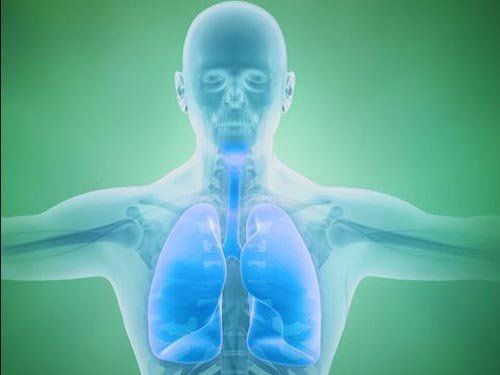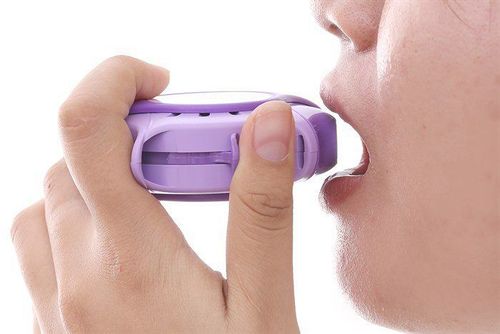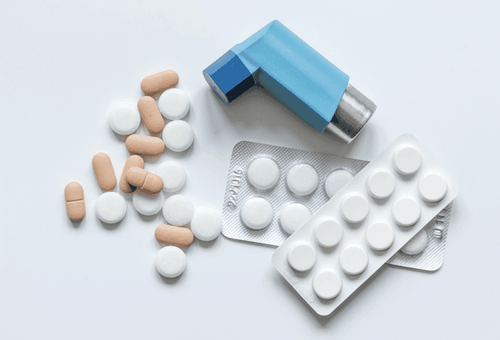This is an automatically translated article.
Each of us has tried to hold our breath to see how long. Or have you ever asked the question, where does the oxygen in the body come from and how does it work? The way oxygen moves through our bodies is not simply a matter of inhalation and exhalation, it is a rhythmic process. Let's listen to Master, Doctor Nguyen Huy Nhat, Respiratory Doctor, Vinmec Da Nang General Hospital share about the complex journey of Oxygen in the human body to better understand this issue!Video content is professionally consulted by Master, Doctor Nguyen Huy Nhat, Respiratory Doctor, Vinmec Danang International General Hospital
1. The complex journey of oxygen in the human body
If you are wondering what is the mechanism by which oxygen works in each of us? How does the passage of oxygen from the outside of the body into the body work? And where are the organs that play an important role in the process of bringing oxygen around our body, it is necessary to understand the process of oxygen working in the human body as follows:The path of oxygen in the body of we are in fact a very complex process and involve many different parts. The beginning of the process of oxygen entering the body is that you will inhale. According to calculations, on average, we inhale 17,000 times per day.
This is really a process that requires a great deal of coordination from the agencies. In which important internal organs such as: intestines, brain, lungs, blood, bones and heart must work together in a rhythmic manner to maintain your life, by bringing oxygen to the tissues in the body. body to supply each cell. This process produces a molecule called ATP that cells use to initiate other functions.
Bringing oxygen to the cells in the body is a very complex job. It is important to understand that air enters cells by diffusing out from neighboring regions, and that is only effective over narrow distances. In order for oxygen to reach cells in the human body, a network is needed to carry it out. This task is performed by 20 trillion red blood cells. Each cell contains the 270 million oxygen-binding elements of red blood cells that give blood its bright red color.
To create these cells, the human body uses materials obtained from the foods we eat every day. Therefore, it can be considered that the journey of oxygen throughout the body starts from the intestines.
Another interesting thing is that every second in our body, up to 2.5 million red blood cells are shuffled, which is equivalent to 1/3 of the population of Hanoi.
In order for oxygen to reach the lungs, the brain first sends nerve signals to the diaphragm and intercostal muscles. This causes them to contract, increasing the space inside the chest, causing the lungs to expand. At this time, your lungs carry negative pressure, air is drawn in from the outside.
The contact surface of the 2 lungs can be up to 100m2, equivalent to 1 office floor of a company. After passing through the lungs, the oxygen-rich cells are carried to the circulatory system, a collection of capillaries capable of reaching every cell in the body. If all the blood vessels were spread out in one plane, it would be able to roll the earth a few times. Red blood cells are pushed through this huge network of blood vessels and are the heart's job. The heart beats continuously (opens and closes) about 100,000 times per day. This is the ultimate plant to push oxygen where it needs to go.

2. The process of oxygen going in the body
The process of oxygen traveling in the human body is a very complex journey, it is not only the rhythmic coordination of the organs but also the continuous operation of the heart and lungs. Every organ in your body is made up of cells, and for cells, oxygen is life. Cells will die if they don't get enough oxygen. Our body will have problems if the process of transporting oxygen in the body fails. In particular, respiratory failure is a common manifestation when the body is deprived of oxygen. Respiratory activity and oxidation in the body are disordered and functionally impaired, specifically manifestations such as:Fatigue, profuse sweating, headache, nausea Shortness of breath, rapid or shallow breathing , cyanosis Body excitability, restlessness Heart and pulse rapid, disturbances Vision decrease, blurred vision also known as dizziness, dizziness Muscle tone and coordination as well as muscle groups decrease. Psychosis, lethargy, decreased consciousness. Blood pressure increases in the early stages and decreases in the late stages. Above is the complex journey of oxygen in the human body, you can refer to it to better understand.
Please dial HOTLINE for more information or register for an appointment HERE. Download MyVinmec app to make appointments faster and to manage your bookings easily.














